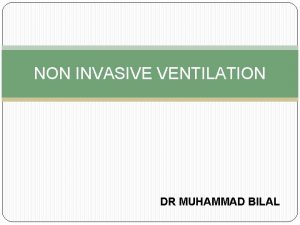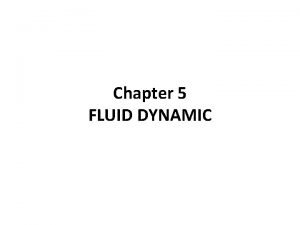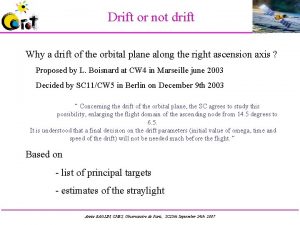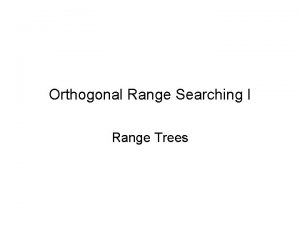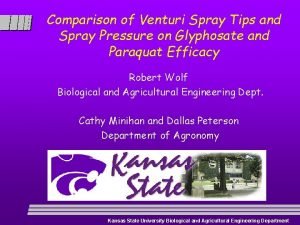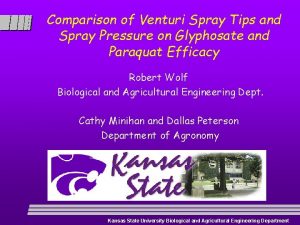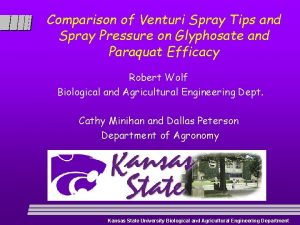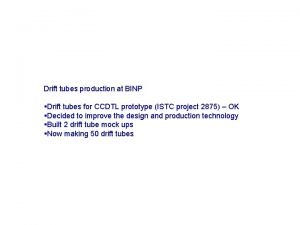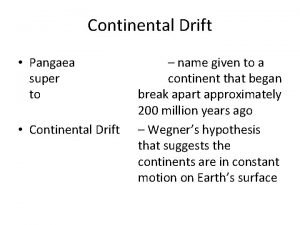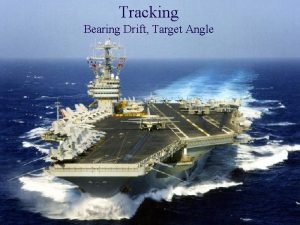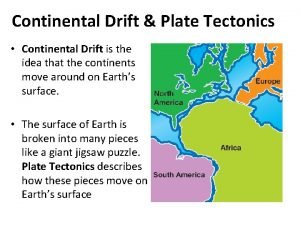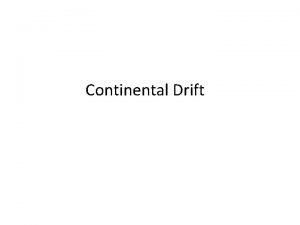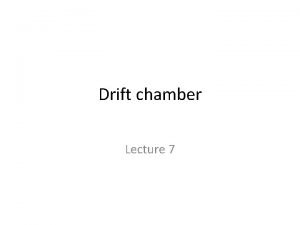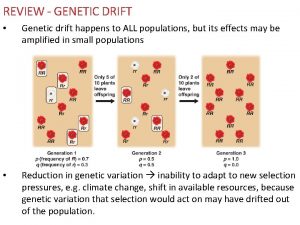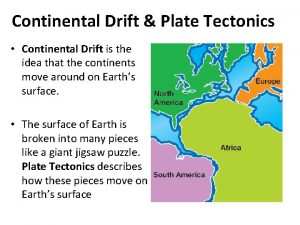Comparison of Drift Potential for Venturi Extended Range



























- Slides: 27

Comparison of Drift Potential for Venturi, Extended Range, and Turbo Flat-fan Nozzles Robert Wolf Biological and Agricultural Engineering Dept. Cathy Minihan Department of Agronomy Kansas State University Biological and Agricultural Engineering Department

Nozzle is still an important part of the application process! Determines the application rate l Determines the uniformity l Determines the coverage l Determines the drift potential l Kansas State University Biological and Agricultural Engineering Department

Will determine coverage: l Need knowledge of the product being used. – Systemic – Contact l What is the target? – – Soil Grass Broadleaf (smooth, hairy, waxy) Leaf orientation – time of day Kansas State University Biological and Agricultural Engineering Department

Will affect drift: Movement of spray particles off-target. l Creating smaller spray drops will result in increased drift. l l Is it Coverage vs Drift? $64, 000 Question? l What is the answer? Kansas State University Biological and Agricultural Engineering Department

Efficacy and Drift Potential is Influenced by: l Size of the Spray Droplets Volume Median Diameter (VMD) l Droplet Spectrum (Range - big to small) % Volume or Number of droplets less than 200 microns in size Kansas State University Biological and Agricultural Engineering Department

Nozzle Technology Today? Nozzles designed to reduce drift l Improved drop size control l Emphasis on ‘Spray Quality’ l Kansas State University Biological and Agricultural Engineering Department

Extended Range Flat-fan: l l Tapered edge pattern 80 and 110 degree fan Requires overlap - 50 to 60% 15 -60 psi range 80° 110° Kansas State University Biological and Agricultural Engineering Department

Turbo Flat-fan l l l l Turbulence chamber as in the Turbo Flood Tapered edge, wide angle flat pattern Designed to work in flat-fan nozzle holder Uniform spray distribution, 50 -60% overlap Wide pressure range, 15 – 90 psi Large, drift resistant droplets Plastic with superior wear characteristics TT XR Kansas State University Biological and Agricultural Engineering Department

Air/Induction – Venturi Nozzle: l l l l l Greenleaf – Turbo. Drop Air intake venturi section Mixing Chamber - air and spray solution blended Pattern tip forms large airbubble drops Required Exit tip flow 2 X venturi orifice Better Penetration? Reduced run-off? Improved coverage? Adequate efficacy? Reduced drift? Kansas State University Biological and Agricultural Engineering Department

XR Flat-fan and Turbo Flat-fan compared to Venturi Style Nozzle 5. 0 MPH wind at 40 psi XR vs Turbo. Drop Turbo Flat vs Turbo Drop Kansas State University Biological and Agricultural Engineering Department

1/2 of spray volume = smaller droplets VMD 1/2 of spray volume = larger droplets Kansas State University Biological and Agricultural Engineering Department

Objective of this study: l Field measure the spray droplet characteristics to evaluate the drift potential of a venturi flat-fan nozzle compared to extended range and turbo flat-fan nozzles. Kansas State University Biological and Agricultural Engineering Department

Materials and Methods: Experiments: Exp. 1 and 2 Early and Late Postemergence Grass Exp. 3 and 4 Early and Late Postemergence Broadleaves Location: Exp. Design: Plot Size: Crop Weeds Visual Ratings: Manhattan, KS 2 x 3 factorial with 4 reps 3 x 9 m with 1. 5 m buffer Oats ‘Don’(Exp. 1 and 2) Velvetleaf, pigweed, and morning glory (Exp. 3 and 4) 1, 2, and 4 weeks after treatment Herbicides (2): Paraquat, 0. 14 kg/ha Glyphosate, 0. 23 kg/ha Application Conditions: Exp. 1 Date: April 19, 2000 Oat/weed Size: 15 cm Temperature: 20 C R. H. : 50% Wind: W-NW 8 -10 km/h Exp. 2 Exp. 3 Exp. 4 May 5, 2000 Aug. 18, 2000 Sept. 1, 2000 SE 5 -8 km/h NE 11 -19 km/h N-E 3 -10 km/h 51 cm 25 C 56% 10 cm 21 C 75% 21 cm 24 C 71% Kansas State University Biological and Agricultural Engineering Department

Materials and Methods cont. : Spray Tips (3): Extended Range Flat-fan (XR) Turbo Flat-fan (TT) Air Induction Flat-fan (AI) Spray Volumes (3): 47 L/ha (110015 orifice tips) 94 L/ha (11003 orifice tips) 187 L/ha (11006 orifice tips) Application Ground Speed: Spray Pressure: Spray Tip Spacing: Canopy Boom Height: 10 km/h 276 k. Pa 76 cm 51 cm Kansas State University Biological and Agricultural Engineering Department

Droplet. Scan used to analyze droplets: System Components Kansas State University Biological and Agricultural Engineering Department

What is Droplet. Scan ? A software program that will allow accurate and rapid measure of spray droplet impressions on watersensitive paper. l Developed at K-State by Devore Systems - modeled after ‘Crumbscan’, a software program to determine hole sizes in slices of bread. l Kansas State University Biological and Agricultural Engineering Department

Important Droplet Statistics: Dv 0. 1 (µm) - 10% of the spray volume in drops < number reported l Dv 0. 5 (µm) - 50% of the spray volume in drops < number reported (also is VMD- volume median diameter) l Dv 0. 9 (µm) - 90% of the spray volume in drops < number reported l Number of droplets under 200 microns l Kansas State University Biological and Agricultural Engineering Department

Important Droplet Statistics: Operational Area Kansas State University Biological and Agricultural Engineering Department

Collection Procedure: Kansas State University Biological and Agricultural Engineering Department

Sample cards: XR TT AI 10 GPA XR TT AI 5 GPA All at 40 PSI 20 GPA Kansas State University Biological and Agricultural Engineering Department

Results and Discussion Kansas State University Biological and Agricultural Engineering Department

All Treatments – Number of Droplets < 200 Microns 5 GPA 10 GPA 20 GPA Kansas State University Biological and Agricultural Engineering Department

Orifice Size Affect – Number of Droplets < 200 Microns Kansas State University Biological and Agricultural Engineering Department

Summary of Findings - Droplet Count under 200 microns: l l At 47 L/ha the extended range flat-fans nearly doubled the turbo flat-fans and created more than four times the venturi flat-fans number of droplets less than 200 microns in size. At 94 L/ha the extended range flat-fans again nearly doubled the turbo flat-fans and more than tripled the venturi flat-fans for number of droplets created under 200 microns. Kansas State University Biological and Agricultural Engineering Department

Summary of Findings - Droplet Count under 200 microns: l l l At 187 L/ha the differences showed similar trends but were not nearly as pronounced. Increasing the application volumes for each nozzle type by increasing the nozzle orifice size also reduced the number of driftable droplets. Venturi nozzle designs reduce the number of droplets created under 200 microns in size when compared to extended range and turbo flat-fan nozzle styles. Kansas State University Biological and Agricultural Engineering Department

XR Flat-fan and Turbo Flat-fan compared to Venturi Style Nozzle 5. 0 MPH wind at 40 psi XR vs Turbo. Drop Turbo Flat vs Turbo Drop Kansas State University Biological and Agricultural Engineering Department

Thanks Kansas State University Biological and Agricultural Engineering Department
 Comparison test series
Comparison test series Transmission across a synapse
Transmission across a synapse Graded potential vs action potential
Graded potential vs action potential Equipotential lines
Equipotential lines Difference between action and graded potential
Difference between action and graded potential Potential energy of an electric field
Potential energy of an electric field Osmotic potential vs water potential
Osmotic potential vs water potential Rocuronium dose
Rocuronium dose Graded potential
Graded potential Electric potential difference
Electric potential difference How to find pressure potential
How to find pressure potential V=pe/q
V=pe/q Calculating water potential
Calculating water potential Axon hillock
Axon hillock Define graded potential
Define graded potential Electric potential and potential difference
Electric potential and potential difference Source of bioelectric potential is
Source of bioelectric potential is Electrostatic potential
Electrostatic potential Water potential
Water potential Market potential and forecasting
Market potential and forecasting Action potential resting potential
Action potential resting potential Action potential definition
Action potential definition Potential energy of a system of charges
Potential energy of a system of charges As compared to long-range forecasts, short-range forecasts
As compared to long-range forecasts, short-range forecasts Tubo de venturi
Tubo de venturi Pneumobelt
Pneumobelt Giovanni venturi
Giovanni venturi Venturi meter
Venturi meter

























